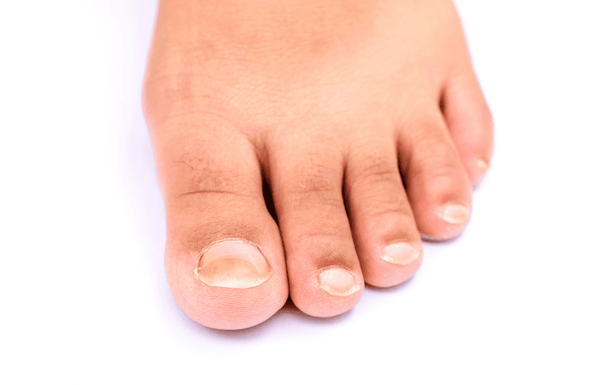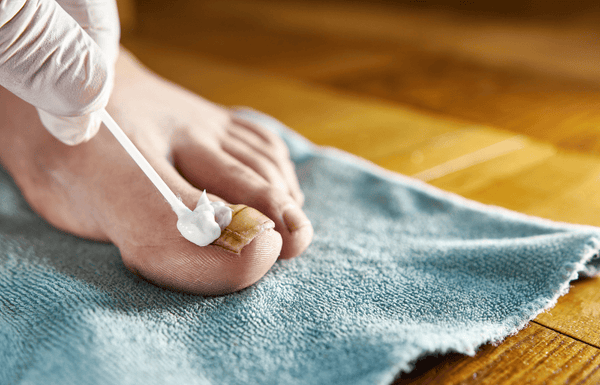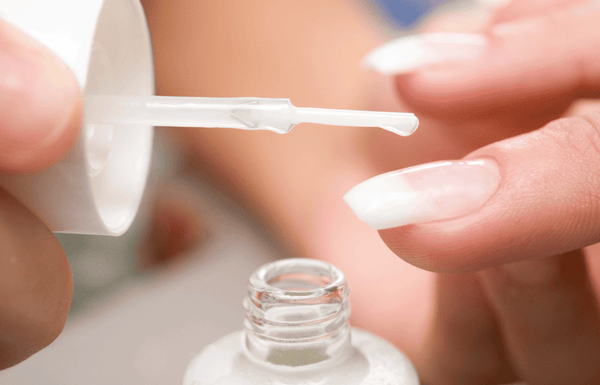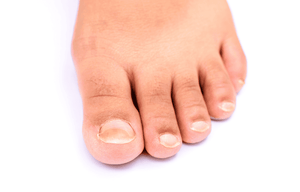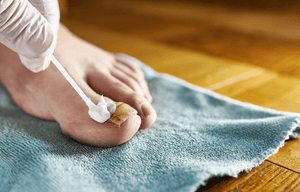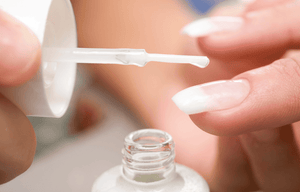
Fungal infections like athlete’s foot are incredibly common, affecting millions of people each year with stubborn invaders that can appear on various parts of the body.
While readily available over-the-counter solutions like antifungal cream and antifungal spray< offer a convenient way to tackle these issues, choosing the right form of treatment is not always a straightforward situation.
So, when should you use cream and when should you use spray for that pesky fungus among us? It depends on where the infection is located and your personal needs and preferences. Here’s how to know which antifungal treatment to go for:
Fungal Infections: WYNTK
Common fungal infections include athlete’s foot (tinea pedis), jock itch (tinea cruris), ringworm (tinea corporis), and nail fungus (onychomycosis), as well as various skin yeast infections.
They are caused by different types of fungi that naturally live on our skin but can multiply rapidly under certain conditions.
Fungi love environments that are warm, dark, and moist, which is why areas like the feet, groin, and skin folds are prime targets. They can spread through direct skin-to-skin contact, or indirectly via contaminated surfaces like locker room floors, shared towels, or even unwashed clothing.
Once a fungal infection takes hold, it can cause itching, redness, scaling, and discomfort. Critically, if left untreated, fungal infections can become chronic, spread to other body parts, or lead to secondary bacterial infections.
When to Choose Antifungal Creams
Antifungal creams are a go-to for many localized fungal skin infections, offering direct, concentrated treatment to specific areas. They are best for localized, small, or contained areas and hard-to-reach spots that require more precise application.
Common circumstances that warrant an antifungal cream include athlete’s foot between toes, ringworm on arms or torso, and jock itch in the groin.
Benefits
Direct Contact: Creams provide intimate, concentrated contact between the active ingredients and the affected skin, potentially delivering a more potent localized effect.
Easy to Apply Precisely: Their thicker consistency means a more accurate application, minimizing contact with unaffected skin for smaller lesions.
Moisturizing: Many creams have a moisturizing base, which can be soothing for dry, flaky skin that often accompanies fungal infections.
Tips for Using Creams
● Always apply antifungal cream to clean, dry skin.
● Gently massage it into the affected area and a small margin of surrounding healthy skin.
● Continue using the cream for the full recommended course, even if symptoms improve quickly. Stopping early is a common reason for recurrence.
Also read: What Are the Best Anti-Fungal Treatments for Athlete's Foot
When to Choose Antifungal Sprays
Antifungal sprays are a versatile and often more convenient option, particularly valuable for larger areas, sweaty zones, and for preventive measures. They’re best for larger or widespread areas, sweaty areas, and prevention in high-risk spots.
Examples of use include athlete’s foot on the soles or entire foot, killing and preventing fungal infections in shoes or on surfaces, and preventive use after gym, pool, or locker room exposure.
Benefits
Covers Wide Areas Quickly: A single spray can cover a broad surface, saving time and effort with more widespread infections.
Reduces Risk of Spreading: Since you don’t typically rub the spray in with your hands, it decreases the chance of transferring the infection to your fingers or other body parts during application.
Hygienic Application: The no-touch application method is a better foot fungus remedy for when direct hand contact might not be preferable for hygienic reasons.
Fast Drying: Most sprays dry quickly, avoiding the greasy feeling that some creams can leave behind. They’re also more ideal for morning and pre-gym application before putting on socks and shoes.
Tips for Using Sprays
● Hold the spray a few inches from the skin and apply a thin, even layer.
● Allow it to air dry completely before covering the area with clothing or footwear.
● For foot fungus remedy, remember that treating your footwear with an antifungal spray is just as important as treating your feet themselves.
Also read: Anti-Fungal Creams vs. Anti-Fungal Sprays: Which Is Better for Ringworm (Tinea Corporis)?
Special Considerations by Body Area
Feet
For small patches of athlete's foot between the toes, an antifungal cream is often a good starting point. However, if the infection is widespread across the sole or top of the foot, an antifungal spray offers superior coverage and hygienic application. Remember to also use an antifungal spray or powder in your shoes to eliminate spores and prevent re-infection.
Groin
For jock itch, a targeted antifungal cream is typically preferred due to the sensitivity of the area. For added comfort and to help keep it dry, use antifungal powders or sprays formulated for this purpose, especially after showering.
Body (Ringworm)
For isolated ringworm lesions on the body, an antifungal cream usually offers the most effective targeted treatment, allowing for precise application directly to the ring.
Nails
Nail fungus is notoriously difficult to treat with topical solutions like creams or sprays alone, as the active ingredients struggle to penetrate the nail plate. For effective nail fungus treatment, professional evaluation and prescription-strength treatments are usually necessary.
Scalp
Scalp fungal infections, aka tinea capitis, almost always require prescription oral antifungal medication because topical creams or sprays cannot penetrate the hair follicles deeply enough. If you suspect a scalp fungal infection, consult your physician for the ne
Combining Creams and Sprays
For stubborn, widespread, or recurring fungal infections, a dual-treatment approach combining creams and sprays can be highly beneficial.
For example, you might use an antifungal cream for direct relief on the visibly infected skin, while simultaneously using an antifungal spray for broader coverage, especially inside shoes or on athletic gear, for preventive coverage.
This multi-pronged strategy attacks the fungus both on the skin and in its environment, increasing your chances of successful eradication and preventing future outbreaks.
When to See a Doctor
While many fungal infections respond well to over-the-counter antifungal cream or antifungal spray, there are times when professional medical advice is needed. Consult your doctor if:
● The infection spreads rapidly, worsens, or recurs frequently despite consistent over-the-counter treatment.
● You suspect a fungal infection of the nails or scalp, as these often require stronger, prescription-strength medications.
● Multiple body areas are affected, suggesting a more systemic or persistent fungal issue.
● You have other health conditions like diabetes, a weakened immune system, or poor circulation.
Prevention Tips to Avoid Future Fungal Infections
- Keep Skin Dry
- Wear Breathable Fabrics
- Change Sweaty Clothing Quickly
- Use Antifungal Sprays or Powders in Shoes and Gym Bags
- Avoid Sharing Towels, Socks, Shoes, or Personal Hygiene Items
- Wear Sandals in Public Areas
Also read: Fungal Infections on the Hands: Why They’re Often Misdiagnosed
Doctor-Formulated Antifungal Spray for Your Hands & Feet
While creams offer precise, concentrated treatment for localized spots, sprays provide better coverage for larger or sweat-prone areas and are invaluable as a foot fungus remedy for prevention.
Remember, if your infection is persistent, widespread, or affecting areas like your nails or scalp, it’s best to seek professional medical advice.
Take proactive steps towards healthy, fungus-free skin! Get the Dr. AntiFungus Hand + Foot Spray and say goodbye to the fungus among us with this doctor-formulated, doctor-recommended remedy:)
